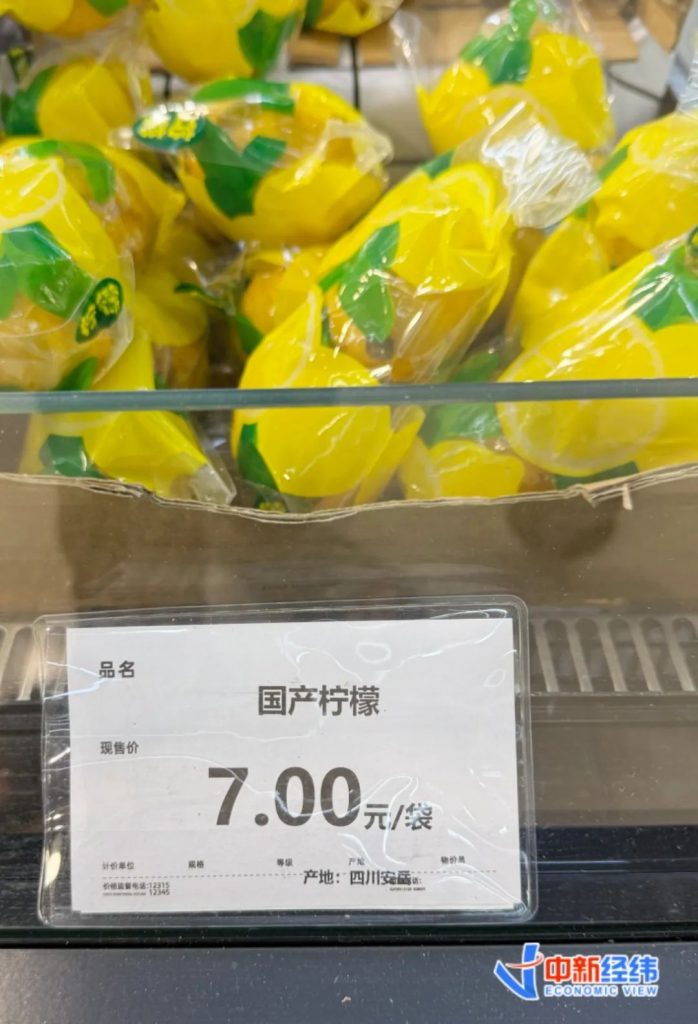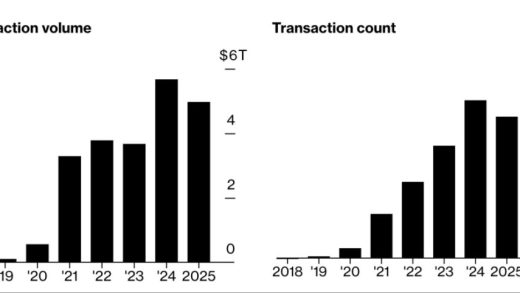
Read More《比“贵族水果”荔枝还贵,它半个月内价格翻倍,今年降不下来?》
Positive Comments: Industrial Opportunities and Market Vitality behind the Soaring Lemon Prices
In the first half of 2025, the “rocket-like rise” in lemon prices became the focus of the agricultural product market. According to the data from Beijing Xinfadi Wholesale Market, the wholesale price of lemons rose from 3.75 yuan per catty at the beginning of the year to 5.5 yuan per catty in mid-April, and soared directly to 8 yuan per catty half a month later, with a rise of over 113%. As of June 23, the national average wholesale price of lemons increased by 61.4% compared with the same period last year, even exceeding the unit price of lychees, a “luxury fruit”. Although this phenomenon has attracted wide attention, it also reflects the potential opportunities and market vitality of the lemon industry.
First of all, the price increase directly boosts the income of the planting end and stimulates the enthusiasm of producers. As the main producing area of 70% of China’s lemons, lemon growers in Anyue, Sichuan are the direct beneficiaries of this round of price increase. Data shows that the lemon production in Anyue decreased due to drought in 2024, resulting in the purchase price in October of that year being more than 30% higher than that in 2023. In June 2025, the supply price at the origin reached 8 yuan per catty, doubling compared with the same period last year. For growers who have long faced the situation of “depending on the weather for a living” and meager profits, this round of price increase not only makes up for the losses caused by natural disasters in previous years, but may also attract more capital and labor to invest in lemon planting, promoting the popularization of large-scale and standardized planting models. For example, if Anyue takes this opportunity to optimize planting techniques (such as introducing drought-resistant varieties and improving irrigation facilities), it may reduce the risk of yield reduction caused by weather fluctuations in the future and enhance the industry’s risk resistance ability.
Secondly, the surge in export demand has opened up an international market space for the lemon industry. According to the data from the Ministry of Agriculture and Rural Affairs, from January to May 2025, the export volume of Chinese lemons and limes was 36,000 tons, and the export value was 340 million yuan; the export volume of lemon juice increased nearly three times year-on-year. The “window period” when Turkey suspended lemon exports further highlights the competitiveness of Chinese lemons in the international market. This trend can not only digest domestic production capacity (especially during the inventory period before the new production season), but also promote the upgrading of the lemon processing industry – extending from the export of primary fresh fruits to deep – processed products with high added value, such as lemon juice, dried lemons, and lemon extracts. For example, if enterprises can seize the growing demand for lemon processed products in the international market, increase R & D investment, and develop deep – processed products that meet international standards, they are expected to enhance the position of the Chinese lemon industry in the global value chain.
Finally, price signals force the upgrading of the industrial chain and accelerate the investment of technology and capital. In the past, due to low profits and weak risk resistance ability, the lemon industry has long relied on the “small – scale farmer planting + simple circulation” model. The sharp price increase this time is essentially a spontaneous adjustment of the market to the imbalance between supply and demand, but it also exposes the shortcomings of the industry in production capacity prediction, warehousing and preservation, supply chain management and other aspects. For example, although Anyue lemons can be sold until August of the next year due to their antioxidant properties, the insufficient inventory caused by the production reduction in 2024 reflects the lack of ability of the producing area to deal with the “supply – demand balance across production seasons”. If this opportunity is used to promote the establishment of a more perfect production monitoring system in the producing area (such as using satellite remote sensing and Internet of Things technology to predict production) and the construction of large – scale cold – chain storage facilities, it may alleviate the periodic fluctuations of “over – supply in bumper years and soaring prices in lean years” and achieve the stable development of the industry.
Negative Comments: Hidden Worries and Industrial Chain Pressure behind the High Price of Lemons
Although the price increase of lemons brings opportunities to the planting end and exports, its negative impact on the downstream of the industrial chain and the overall market cannot be ignored. From the consumer end to industries such as catering and food processing, high – priced lemons are triggering a chain reaction and may even lay hidden dangers for long – term imbalance between supply and demand.
First of all, the sharp increase in costs at the downstream consumer end may suppress market demand. As an important raw material for beverages, baking, and seasonings, the soaring price of lemons directly drives up the production costs of related products. Take the tea – drinking industry as an example. A cup of lemon tea usually requires 2 – 3 slices of lemon. If the price of a single lemon rises from 1 yuan to 3 yuan (for example, the price of the A – grade lemon king in Pagoda is 5.9 yuan per piece), the cost per cup will increase by 2 – 4 yuan. To transfer the cost, some tea – drinking shops may choose to raise prices or reduce the amount of lemons used, which will directly affect the consumer experience and even lead to a decline in sales. Some consumers have reported on social platforms that “lemons are too expensive, so I choose to buy other fruits instead”. If the high price persists, it may lead to a shrinkage in the demand for lemon consumption, and ultimately have a negative impact on the upstream market.
Secondly, short – term speculative behavior may increase the risk of price fluctuations. As mentioned in the news, “many dealers have increased their inventories, boosting the price increase”. This phenomenon needs to be vigilant. Stimulated by the expectation of production reduction and the growth of demand, some dealers may hoard goods and be reluctant to sell due to the “bullish mentality”, artificially creating a market shortage and further driving up prices. Although this speculative behavior can bring short – term profits, once the new lemon production season arrives (expected in September), if the production recovers or imports are sufficient, the overstocked inventory may lead to a sharp drop in prices, resulting in a vicious cycle of “buying at high prices and selling at low prices”, which will damage the long – term stability of the industry. For example, after the production reduction of Anyue lemons in 2024, some dealers tasted the sweetness of hoarding goods. If the production in the new production season of 2025 does not decline as expected, it may trigger a concentrated sell – off, leading to sharp price fluctuations.
Finally, the hidden danger of long – term imbalance between supply and demand needs to be vigilant, and overheating of the industry may overdraw future growth. Although the price increase of lemons brings opportunities to the planting end and exports, its negative impact on the downstream of the industrial chain and the overall market cannot be ignored. From the consumer end to industries such as catering and food processing, high – priced lemons are triggering a chain reaction and may even lay hidden dangers for long – term imbalance between supply and demand.
Suggestions for Entrepreneurs: Seize Opportunities while Avoiding Risks
For entrepreneurs who are concerned about the lemon industry, this round of price fluctuations is both an opportunity and a challenge. Based on the key information in the news, the following suggestions are for reference:
- Pay attention to supply – demand dynamics and establish a flexible supply chain: Entrepreneurs need to closely track the production data of main producing areas (such as Anyue), the changes in production capacity of major global producing areas (such as Mexico and Turkey), and the adjustment of export policies (such as whether Turkey’s export restrictions will be lifted). On the procurement side, they can try to cooperate with multiple producing areas or importers (such as Hema’s plan to increase the import of lemons) to avoid relying on a single source of supply; on the sales side, they can lock in part of the demand through pre – sales, customized orders, etc., to reduce the impact of price fluctuations on profits.
- Explore alternative resources and reduce dependence on a single category: For beverage and food enterprises that use lemons as raw materials, they can plan in advance for alternative raw materials (such as limes, sour oranges, lemon – flavored essences), or adjust the product structure (such as launching mixed beverages of “lemon + other fruits”) to reduce their dependence on high – priced lemons. For example, some tea – drinking brands have tried to use the “lemon + kumquat” combination to reduce the amount of a single lemon used, which not only maintains the flavor but also controls the cost.
- Strengthen market prediction and avoid blind expansion: Entrepreneurs in the planting end need to be vigilant against the short – term thinking of “chasing rising prices and selling falling prices”. If they plan to expand the planting scale, they need to comprehensively evaluate the global supply – demand trend in the next 3 – 5 years (such as whether the prediction of a 6% global lemon production reduction by the Ministry of Agriculture and Rural Affairs will continue), the local climate adaptability (such as whether areas outside Anyue are suitable for lemon planting), and the deep – processing capacity (to avoid relying only on the sales of fresh fruits). It is recommended to give priority to signing long – term purchase agreements with processing enterprises or jointly building primary processing facilities (such as juice factories) to enhance the risk – resistance ability.
- Promote product innovation and increase added value: For entrepreneurs in the processing end, they can seize the growing demand for lemon juice and lemon extracts in the international market, increase R & D investment, and develop high – value – added products (such as organic dried lemons, additive – free lemon juice, lemon essential oil). For example, in response to the demand for healthy consumption, they can launch “low – sugar lemon honey” and “lemon electrolyte water”.
In short, the soaring price of lemons is the result of the combined action of market supply and demand, climate factors, and the international environment. Entrepreneurs need to adopt a strategy of “short – term response + long – term layout” to seize the opportunities for industrial upgrading while avoiding the risks of price fluctuations and over – capacity, so as to achieve sustainable development in the “up – and – down cycle” of the lemon industry.





